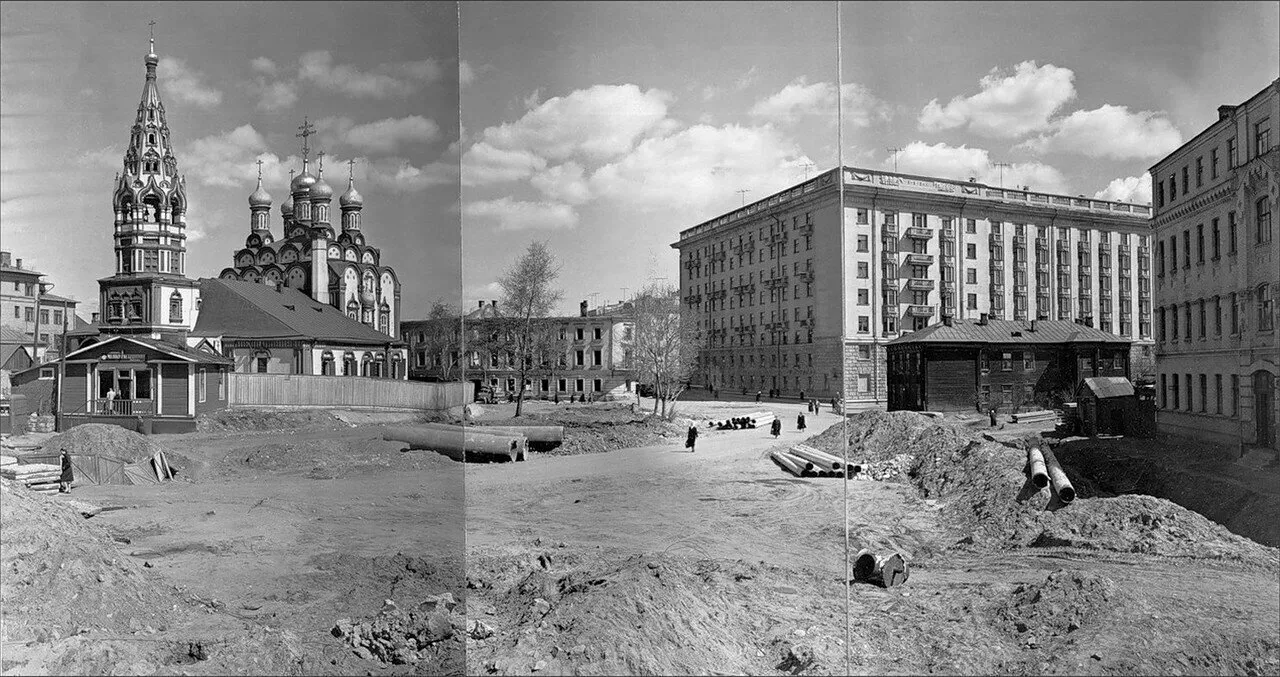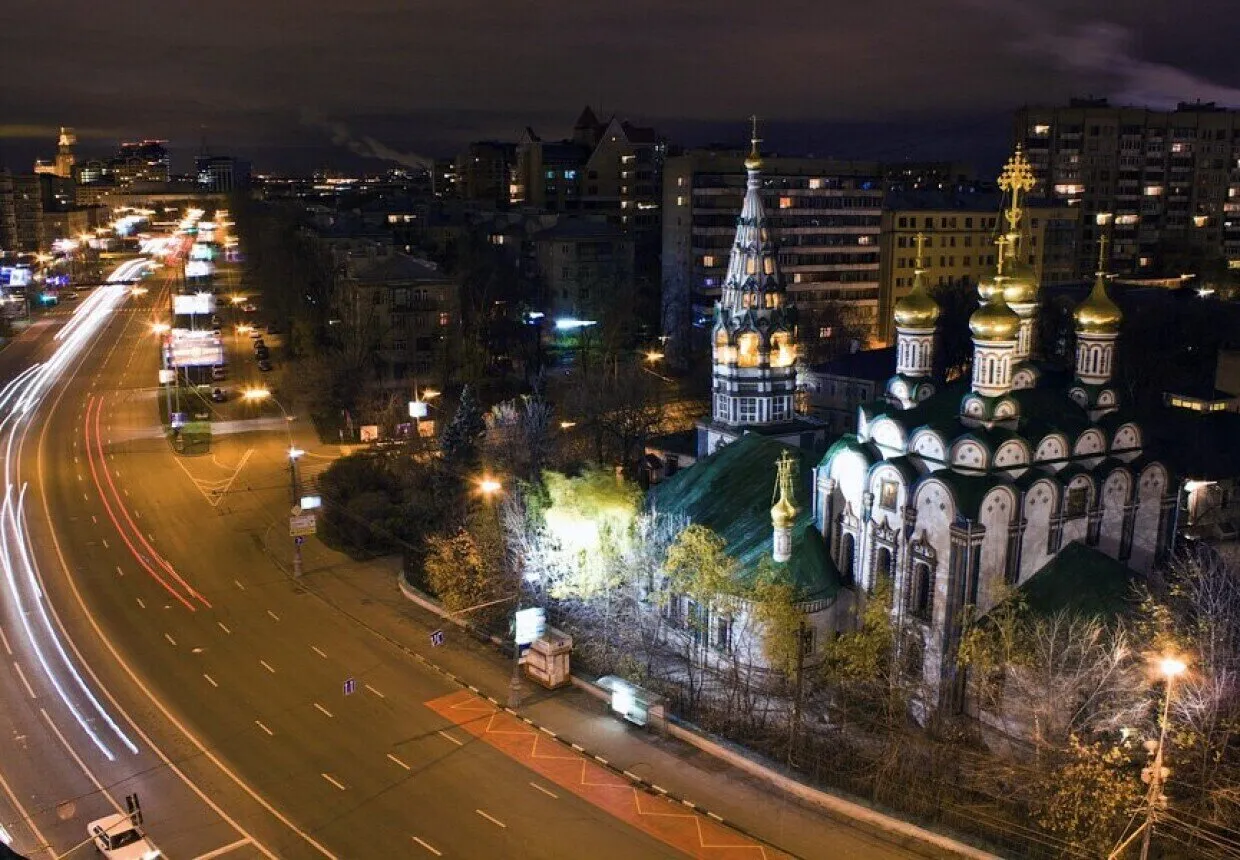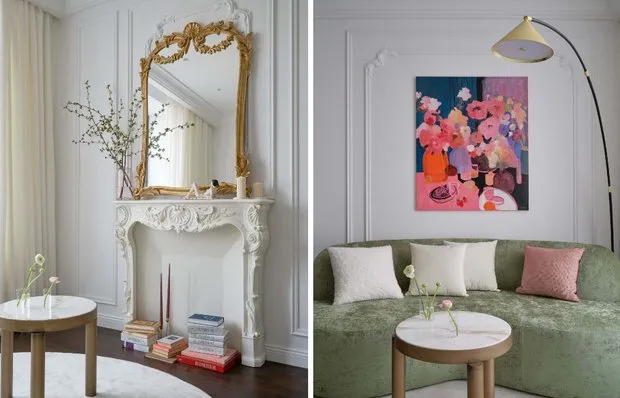There can be your advertisement
300x150
Hamovniki: How a Noble District Became the Most Expensive Area in the Capital
The story of how a working slum transformed into one of Moscow's most prestigious districts
One square meter of housing in Hamovniki today costs as much as a mid-range car. But just a couple of centuries ago, this was where craftsmen wove coarse cloth for the tsar's needs. The story of how a working slum became Moscow's most prestigious district reads like an exciting novel about how geography can completely change the fate of a place.
- Hamovniki got their name from craftsmen called 'hamovniks' who wove coarse cloth known as 'ham' for the army;
- In the 18th and 19th centuries, the area became a noble estate zone due to its proximity to the Kremlin;
- Here lived Leo Tolstoy, Ivan Turgenev, merchants Morozovs and other celebrities;
- The Soviet regime turned manors into communal apartments, but the prestige of the district remained;
- Today, Hamovniki is one of the most expensive districts not only in Moscow but throughout Russia.
From Army Cloth to Noble Estates
In the 16th century, Tsar Vasili III decided that the army needed quality cloth. For this reason, he settled craftsmen weavers on the left bank of Moscow River who made coarse but durable fabric called 'ham'. From this came the name — Hamovniki, meaning 'weavers of ham'.
The craft slum flourished for almost two centuries. Hamovniki wove not only for the army but also for the tsar's court. Their products were valued for practicality: the material was so strong that it was used to make sails for ships and harnesses for horses.
But by the end of the 17th century, weaving in the slum began to decline. Peter I moved many manufactories to St. Petersburg and Moscow craftsmen gradually became impoverished. The land lay empty, prices fell — and soon the first buyers from the noble class arrived.
 Photo from website: humus.livejournal.com
Photo from website: humus.livejournal.comTolstoy, Turgenev and Other Neighbors
By the beginning of the 19th century, Hamovniki had become a favorite place for Moscow aristocracy. The reason was simple: the district was close enough to the Kremlin to quickly reach the court, but still quiet and green.
The most famous resident of Hamovniki was, of course, Leo Tolstoy. In 1882, the writer bought a wooden manor in Dolgohamovnichesky Lane (now L. Tolstoy Street). Here he lived for 19 years and wrote 'Resurrection', 'The Kreutzer Sonata' and many stories. Tolstoy loved his house so much that he even walked through the garden in just a shirt in winter — neighbors considered him eccentric.
Not far away, on Ostozhenka, lived Ivan Turgenev. Although his house did not survive to our days, contemporaries remembered that the writer held literary evenings in his manor where all of Moscow's intelligentsia would gather.
Another colorful neighbor was industrialist Savva Morozov. His manor on Spiridonovka (formally this is no longer Hamovniki, but it's nearby) was designed by Fedor Shekhetel and considered one of the most beautiful in Moscow. Morozov funded the Moscow Art Theatre and was a patron, but his love for revolutionaries eventually led to his mysterious death in Nice.
 Photo from website: tolstoymuseum.ru
Photo from website: tolstoymuseum.ruAristocratic Life in the Moscow Style
Life in noble manors of Hamovniki flowed steadily and luxuriously. Unlike St. Petersburg aristocracy, Moscow nobles preferred domestic comfort over European ostentation.
A typical day of a lady in a manor began with inspecting the estate. Even in the richest homes, they kept chickens or sometimes cows — this was not considered poverty but practicality. After breakfast came visits to neighbors, mandatory for maintaining social connections.
Home salons played a special role. Thursdays at the Tolstoy house brought together artists and musicians. Sofya Andreevna played piano well, while Lev Nikolayevich enjoyed accompanying on guitar, although according to guests' accounts, he did so more enthusiastically than skillfully.
Winter evenings in the manors often featured amateur theatrical performances. Roles were distributed among family members and close friends. Decorations were painted by hand, costumes made by home seamstresses. These amateur productions sometimes became so successful that they were discussed throughout Moscow.
Merchant Gold and Industrial Dynasties
By the end of the 19th century, Hamovniki were not only home to nobles but also wealthy merchants. Morozovs, Mamontovs, Shchukins — these names echoed across Russia.
The Morozov manor on Podsolosnensky Lane still amazes with its grandeur. Built in the style of Moscow modernism, it featured towers, bay windows and colorful tiles. Inside were a billiard room, home theater and winter garden with exotic plants.
The Shchukin family gained fame not only in textile business but also in collecting. Sergei Shchukin assembled one of the world's finest collections of French impressionist paintings. In his manor on Bolshaya Znamenskaya (again, near Hamovniki), Picasso, Matisse and Renoir's works hung. After the revolution, the collection was nationalized and became part of the Hermitage and Pushkin Museum.
Merchants didn't just spend money on luxury — they actively engaged in charity. The Morozovs funded hospitals and schools, the Mamontovs supported artists, while the Shchukins maintained orphanages.
Revolutionary Turmoil and Soviet Reality
The year 1917 changed life in Hamovniki dramatically. Noble and merchant manors were nationalized. Most were turned into communal apartments where several families lived in former ballrooms.
The Tolstoy house was lucky — it was immediately turned into a museum. However, the Morozov manor was divided into 40 rooms for working families. The former library housed a kindergarten, and the winter garden became a locksmith's workshop.
Even during Soviet times, Hamovniki retained special status. Party nomenclature and famous writers and artists were housed here. In the 1920s, Vladimir Mayakovsky, Sergei Yesenin lived in the district; later Konstantin Simonov and Ilya Ehrenburg.
There was even a joke: 'In Hamovniki live two types of people — those who got apartments for services to the people, and those who haven't lost them yet.' The district's prestige proved stronger than any political upheaval.
Modern Elite and Cosmic Prices
Today's Hamovniki is a territory where one square meter of housing costs between 800 thousand to 1.5 million rubles. For comparison: for this amount, one can buy a three-bedroom apartment in a regional center.
What makes the district so expensive? First, location. It's a walk to the Kremlin, Red Square and major theaters and museums. Second, infrastructure — nearby are top schools, clinics and restaurants. Third, historical aura accumulated over centuries.
Modern residents of Hamovniki are top managers from big companies, successful entrepreneurs and show business stars. Many buy apartments here not for living but as an investment — prices in the area grow faster than inflation.
Of course, there are quirks. In 2019, a story circulated on social media about a new resident of an elite building trying to install surveillance cameras in the entrance, but neighbors opposed — it turned out some of them preferred anonymity.
 Photo from website: mayak.travel
Photo from website: mayak.travelHamovniki have traveled the path from a craft slum to the most expensive district in the capital over four centuries. Here, eras and fates have intertwined — ambitions and tragedies. And today, walking through quiet lanes with their manors and parks, one can still feel the breath of history — only now it costs a very high price.
Featured image from website: humus.livejournal.com
More articles:
 Designing Khrushchyovka: 5 Great Projects to Note
Designing Khrushchyovka: 5 Great Projects to Note How to Remove Dust from Home for a Month: Effective Method That Works
How to Remove Dust from Home for a Month: Effective Method That Works How Jennifer Aniston Lives: Home, Rituals and Favorite Things
How Jennifer Aniston Lives: Home, Rituals and Favorite Things 7 Interior Details That Reveal Bad Taste
7 Interior Details That Reveal Bad Taste Antitrends: 7 Things to Avoid in Your Interior
Antitrends: 7 Things to Avoid in Your Interior 6 interesting solutions we found in a stylish studio apartment
6 interesting solutions we found in a stylish studio apartment Tiny but very cozy kitchen 6 m² in a pre-revolutionary house
Tiny but very cozy kitchen 6 m² in a pre-revolutionary house How They Designed the Bathroom in a Pre-Revolutionary Apartment on Arbat
How They Designed the Bathroom in a Pre-Revolutionary Apartment on Arbat